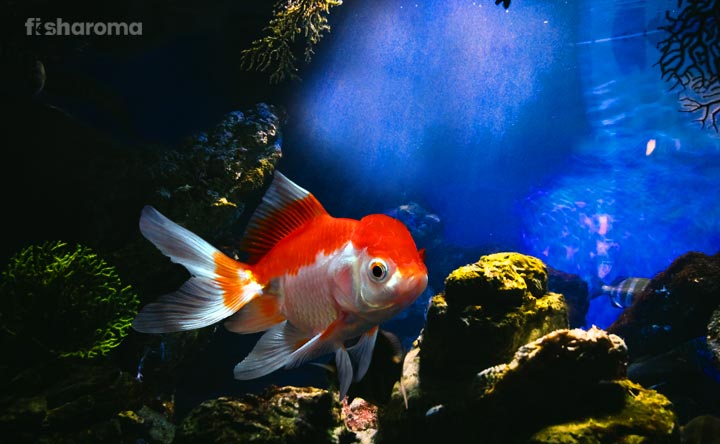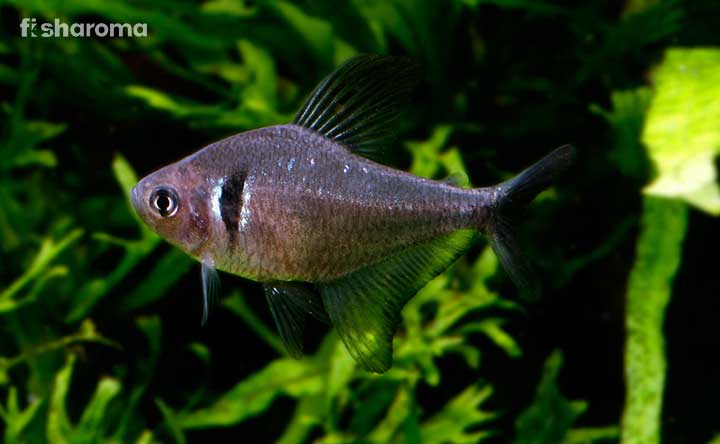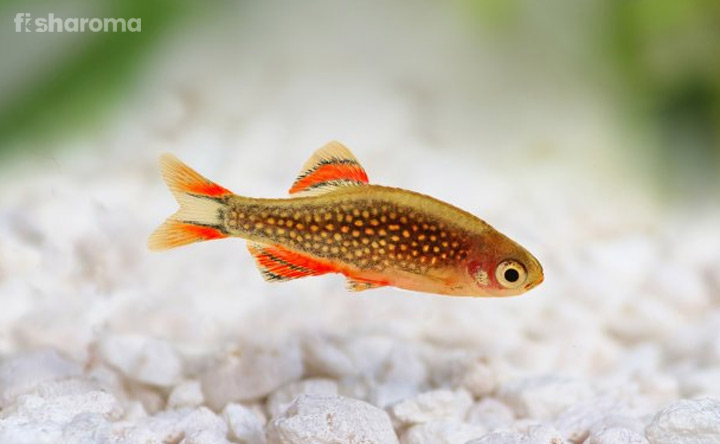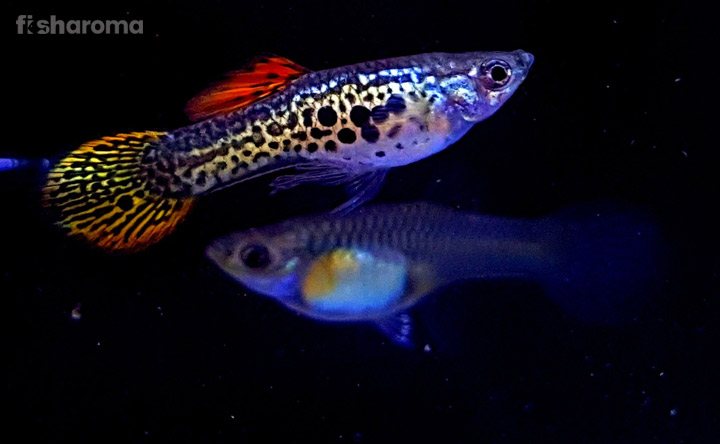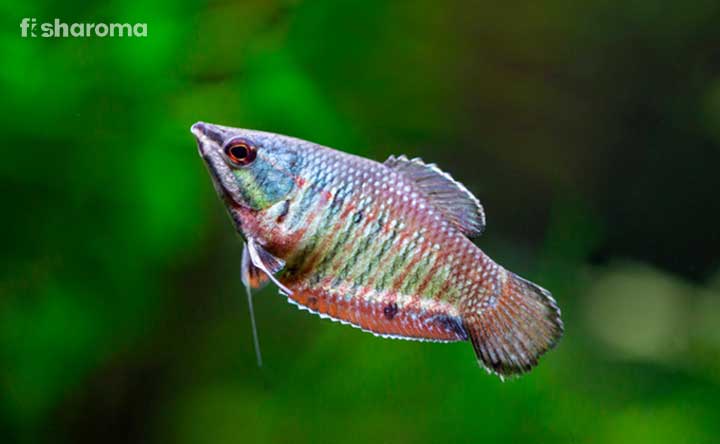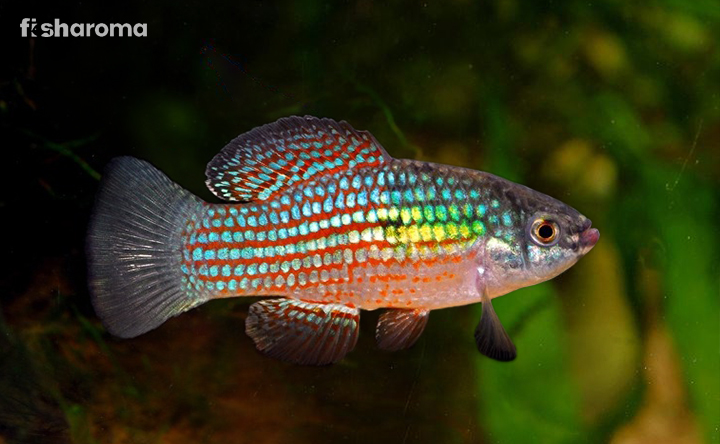Cory Catfish – The Complete Care Guide of This Armored Catfish

- Origin of Cory Catfish
- Appearance of Cory Catfish
- Types of Cory Catfish
- Temperament of Cory Catfish
- Suitable Tankmates for Cory Catfish
- Dietary Requirements for Cory Catfish
- Tank Requirements for Cory Catfish
- Water Type for Cory Catfish
- Cory Catfish Breeding
- Diseases of Cory Catfish with Interventions
Cory Catfish is one of the most popular peaceful and beginner-friendly fish that is famous by other names such as Cory Cats, Corydoras Catfish, and Armored Catfish. The bone-like pattern on the upper portion of its body runs from top to bottom which is one of the reasons that this Catfish is known as ‘Armored Catfish’.
The mild temperament, easy-to-care nature and unique look of this fish are quite attractive to both the novice and experienced fishkeepers. Usually, it is found in a shoal because it is a schooling fish and it prefers swimming with a school of Catfish in small streams and rivers. Moreover, Corydoras is one of the best scavengers and tank cleaners who clean the aquarium by consuming algae and other wastes.
Quick Details on Cory Catfish
We are here to let you know the ultimate care guide to keep this pet fish in your aquarium. But before that, we have given a short detail about this Catfish in the table, so that you can put a glimpse on its nourishment process.
| Scientific Name | Corydoras |
| Origin | Freshwater of South America, Argentina, Brazil, Paraguay, Uruguay, and Suriname |
| Life-Span | 5 years |
| Colors | Bronze, Golden Yellow, and Several Other Colors |
| Temperament | Peaceful |
| Size | 0.75-4” (1.90-10.16 cm) |
| Diet | Omnivoros |
| Family | Callichthyidae |
| Compatibility | With Other Peaceful Species |
| Tank Size | 10 gallons |
| Care Level | Easy |
Overview
The word ‘Cory’ means helmet and ‘doras’ means skin. The name Corydoras is given because of the thick skin cover of the fish. This bottom-dwelling fish is not very active and it prefers living at the bottom of the aquarium on the fine gravels or sandy substrate. There are about 170 species in the family of Corydoras. As there are different sizes, shapes, and patterns of Cory Catfish, you need to find an appropriate fish tank as per the size of your pet fish.
Some species can live for five years and others can live longer up to ten years if proper care and support are given to them. This fish is often affected with rot fin disease, so look at the fins, barbels, and tail before purchasing this pet fish from a pet shop. Just $30 is enough to buy this bottom-dweller Catfish.
Origin of Cory Catfish
Native to the small streams and lakes near South America, Cory Catfish is generally found in the streams and rivers. This fish was first found in 1830 by Charles Darwin in Rio de la Plata Basin, the largest basin in South America. Along with America, this Catfish was found in other places like France, Paris, Brazil, Uruguay, Florida, and Asia later.
Appearance of Cory Catfish
Male Catfish reaches up to 2.5” (6.5 cm) in size and the females reach up to 3” (7.5 cm). The body of this fish is stocky and covered with two rows of bony plates and stocky and they are known as scutes. Moreover, the head of this fish is covered with large bony plates. There are two pairs of barbells in the upper jaw of the fish that helps the fish rummage through the substrate for morsels of food.
You will find many colors of this fish like pale olive, shimmering green, dark green, yellow-golden, bronze shade covered with black bands. The dorsal fins of this fish are pale with dark splotch and rays. The caudal fins of the fish have fine spots sprinkled over them. The tail of this fish is just like a fork. Their eyes are wide and round like a ring that helps them look the distant things clearly at night also.
Types of Cory Catfish
This tank-cleaning bottom-dwelling fish has 170 different species, which are different from each other in appearance and sizes. Some of them are:
- Panda Cory Catfish – This fish is a highly active and social breed that is bronze-golden shaded with black bands on its body. The size of this fish is 2” (5 cm) and it can live up to ten years.
- Pepper Cory Catfish – This fish has iridescent shade and shining scales on its body and the light brown color of this 2.5” (6.5 cm) fish is quite attractive.
- Albino Cory Catfish – This fish is usually found in golden shade and pinkish-white shade. Its red eyes glow always. Its beautiful color and easy-to-breed nature make it attractive to fishkeepers.
- Julii Cory Catfish – This light green fish lives at the bottom of the water and searches for its foods under the gravels. If you keep worms and shrimps in its tank then this foody fish will feel comfortable to dwell in your fish tank.
- Bronze Cory Catfish – The Bronze Cory also looks like Pepper Cory and its color is bright copper-brown which makes it look like a copper toy. This fish is a peaceful schooling fish and it loves enjoying with the fish breeds of the same community.
- Sterbai Cory Catfish – Sterbai Cory is one of the most beautiful Catfish that is famous for its bright eyes and dark pattern. The scales of this fish are not shimmering compared to other Cory Catfish.
- Pygmy Cory Catfish – This 1” (2.54 cm) fish is perfect for a small aquarium and it is easy to care for. This is a slow-moving fish in comparison with other fish.
- Green Cory Catfish – This medium-sized Cory Catfish has two shades of bronze and green on its body. Its fins and tail are black and albino in color.
- Bandit Cory Catfish – The black mask on the eyes of this Catfish helps it in finding its prey in the dark also. Moreover, this fish prefers eating meaty foods more than vegetative foods.
- Skunk Cory Catfish – It is a sensitive freshwater fish that is not very hardy in nature. So, if you are planning to keep this fish in your aquarium then you have to be very cautious about petting the fish. The water condition of the aquarium should be clean and it should be changed once a week.
- Three Stripes Cory Catfish – This 2.5” (6 cm) fish is tiger-patterned and there are three stripes available on the body of this fish. This fish can live in every type of water temperature.
Temperament of Cory Catfish
This nocturnal fish is a bottom dweller and it prefers taking rest in the day and staying active at night. You will find them swimming with a shoal of fish without any conflict, as it is a peaceful species. This bottom-dweller comes to the upper surface of the water when it needs air. An adapted intestinal lung is given to the fish so that it does not suffer from respiration problem.
This fish never attacks any species, instead, it hides in the cave or behind plants when it is threatened or attacked by any predator or large fish. However, if highly stressed then this species becomes venomous and produce toxins to kill its enemies.
This fish also has the ability to produce a sound by abduction or moving. This is the sound of its pectoral fins. This fish can sit in one place for a long time. This fish finds food with a school of fish because it loves group activity.
Suitable Tankmates for Cory Catfish
Cory Catfish prefers living with peaceful schooling fish of the same size. Neither they like large breeds nor they are comfortable with aggressive predators. So, keep this fish with colorful and calm schooling species such as:
- Neon Tetra
- Mollies
- Danios
- Livebearers
- Guppies
- Swordtails
- Bristlenose Pleco
- Snails
- Shrimps
Unsuitable Tankmates
Never keep vicious, large and fighter fish in a tank of this fish who can harm the fish in an adverse way. Try and avoid keeping them with the following breeds:
- Cichlids
- Oscars
- Sharks
- Barbs
- Silver Arowana
- Other Predator Fish
Compatibility of Cory Catfish
You can keep six Cory Catfish together, and if you are keeping more fish with it then keep them in a 20-gallon tank. This fish loves living happily with a shoal of colorful fish of same breeds. They have the best compatibility between the mating partners also.
Dietary Requirements for Cory Catfish
This omnivoros fish likes eating both vegetation and meaty foods. Usually, they consume food by sucking up the food with its mouth by digging it from the ground in the wild. In captivity, you can feed them live foods, fresh foods, granules, pellets and flakes such as:
- Daphnia
- Bloodworms
- Tubifex
- Algae Wafers
- Shrimp Pellets
- Bottom-Feeder Tablets
- Green Vegetables
- Algae
Change the diet of the fish every few days to provide enough nutrition to the fish. You should feed for 3-5 minutes twice a day to Cory Catfish. Don’t keep the eggs of any species in the tank of this Catfish because this fish has a habit of consuming fish eggs. Overfeeding may negatively affect them, so feed them as much as they can eat in a day.
You can also feed them frozen and pellet foods that are highly nutritional such as:
- Freeze Dried Bloodworms
- Hikari Algae Wafers
Tank Requirements for Cory Catfish
You need to arrange a rectangular-shaped aquarium for this bottom-dwelling Catfish so that it can comfortably take rest for a long time. Follow some necessary requirements to set the tank:
Tank Size
A 10-gallon tank is enough for 5-6 fish. This fish dwells in a shallow stream, so slow-moving water with soft sediment is required for this Catfish.
Ornament
Along with soft sediment, you can keep dark-shaded smooth-edged gravels in the tank of this fish. Moreover, live floating plants are ideal for the tank of Cory Catfish because this fish loves greenery. You can also keep bogwood or driftwood in the tank because this scavenger fish is a good algae eater and algae are generally found on the body of driftwood. Also, arrange caves that will act as a hiding place for this shy fish.
Lighting
This fish prefers moderate and subdued lighting in their tank, so don’t fix harsh light in the tank of this nocturnal fish.
Filter
High filtration is not required; just a good filtration system is required for a Cory Catfish tank to flush out the toxic wastes of the fish and to keep the water of the tank clean.
Water Type for Cory Catfish
The water of the fish tank can be a bit warm or cool like shallow water of the river. However, try to keep fresh aerated water in the tank for the good health of the fish. Here are other requirements mentioned below:
Temperature
The water temperature should be between 72-78°F (22-26°C).
pH Level
Avoid keeping acidic water with rapid fluctuations. The pH level of the water should be 6.0-7.0.
Hardness
The hardness of the water can be up to 12 dGH.
Cleaning Method
Not much effort, you just need to use a soft scrubber or a brush to clean the corners and walls of the fish tank. After scrubbing, wash the tank and check the temperature, hardness and pH level before putting a fresh batch of water in the tank. Just remember to use soft liquid soap for cleaning the tank and avoiding the harshness.
Replacement Process
No need to change the water of the tank regularly, just change 10-15% of the water in a week and 20% of the water in a month to maintain the quality of the water.
Cory Catfish Breeding
This egg-laying fish has a tendency to eat their own eggs after laying it, so set a separate tank for the eggs and the newborn fries. It will be better if you find a separate tank where the fish can spawn and lay eggs. After the reproduction, the parents should be separated from their fries. Once the fries get matured, keep them with their parents. Meanwhile, feed them hatched brine shrimp, cyclops and readymade fry foods.
After laying a set of eggs, the male fish chases the female and the mating process takes place again, so if you don’t want to encourage breeding then separate the male and female for some time.
Diseases of Cory Catfish with Interventions
Cory Catfish is a hardy fish but if the tank water is not clean and fish have eaten too much then it may be affected with some diseases like:
- Ich
- Red Blotch
- Bloating
Therefore, try to monitor the hygiene and temperature of the water and feed them in proper quantity. You also have to maintain the time for feeding this fish. There should not be a long-time gap, otherwise, the fish may be affected with malnutrition.
Interesting Facts about Cory Catfish
- Only Albino Cory Catfish are diurnal Catfish, rest is only active during the night.
- While mating, the female fish attaches herself to the male and consumes his sperm.
- If the nitrate level in the water is high then this fish may get affected with an infection on its barbels.
Other Fish Breeds for Aquarium
There are other bottom-dwelling algae-eating fish you may want to know about before keeping them in your aquarium. Some of them are:
- Bristlenose Pleco: A great fish for the medium-sized aquarium, this bottom-dwelling algae eater is also a scavenger like Cory Catfish. To know more about it read the entire care guide of the fish.
- Molly Fish: This peaceful schooling fish is also a great algae eater that prefers living at the bottom of the tank. Learn its care guide before including it in your aquatic world.



